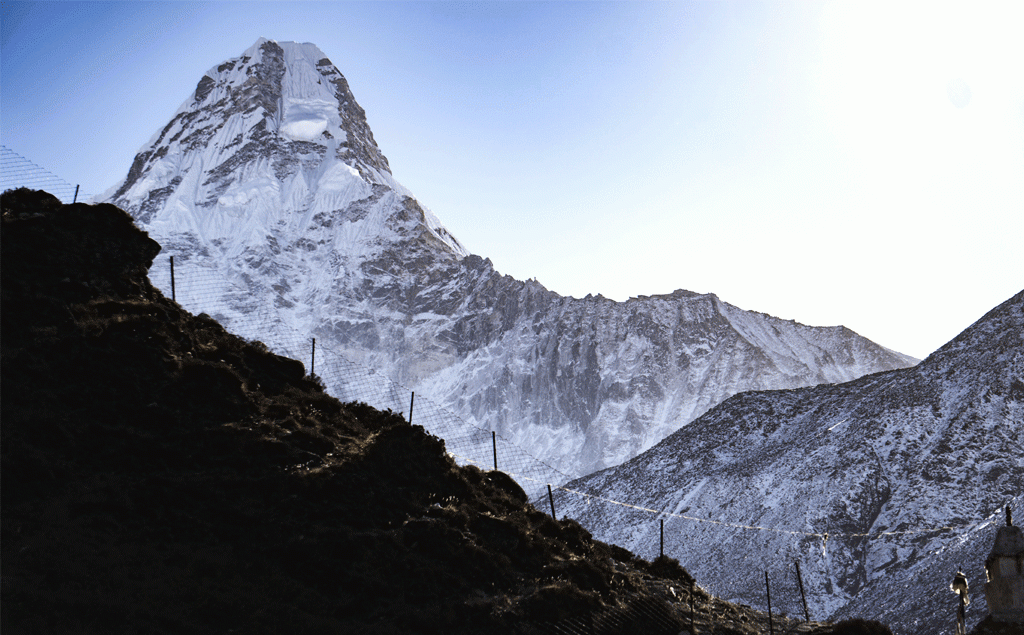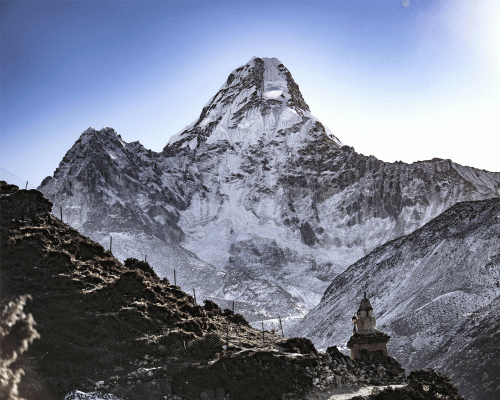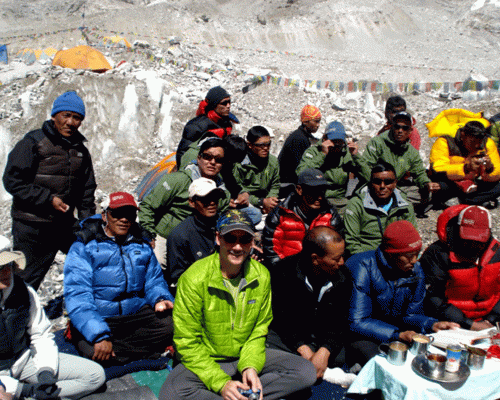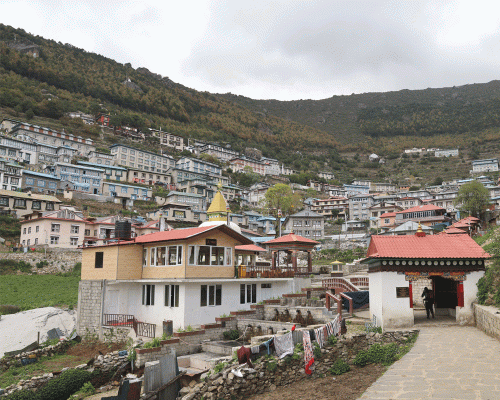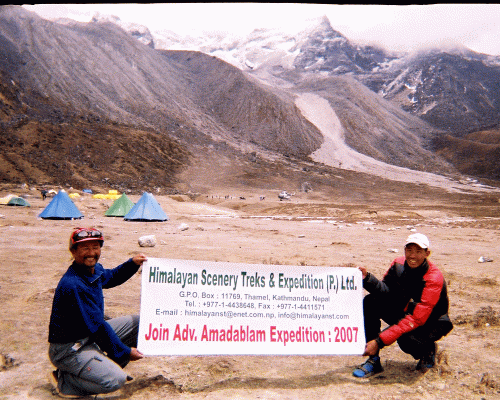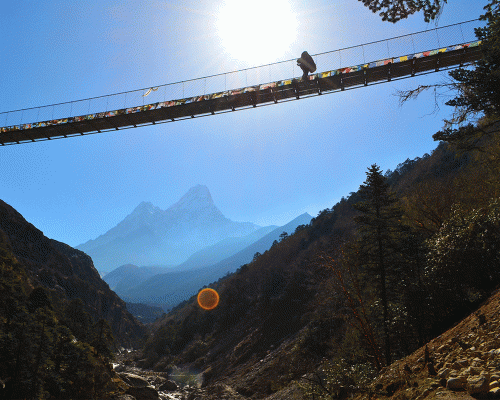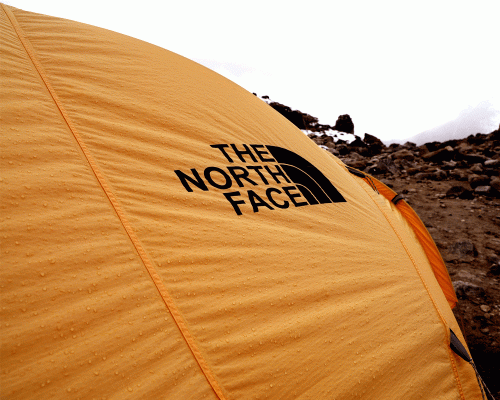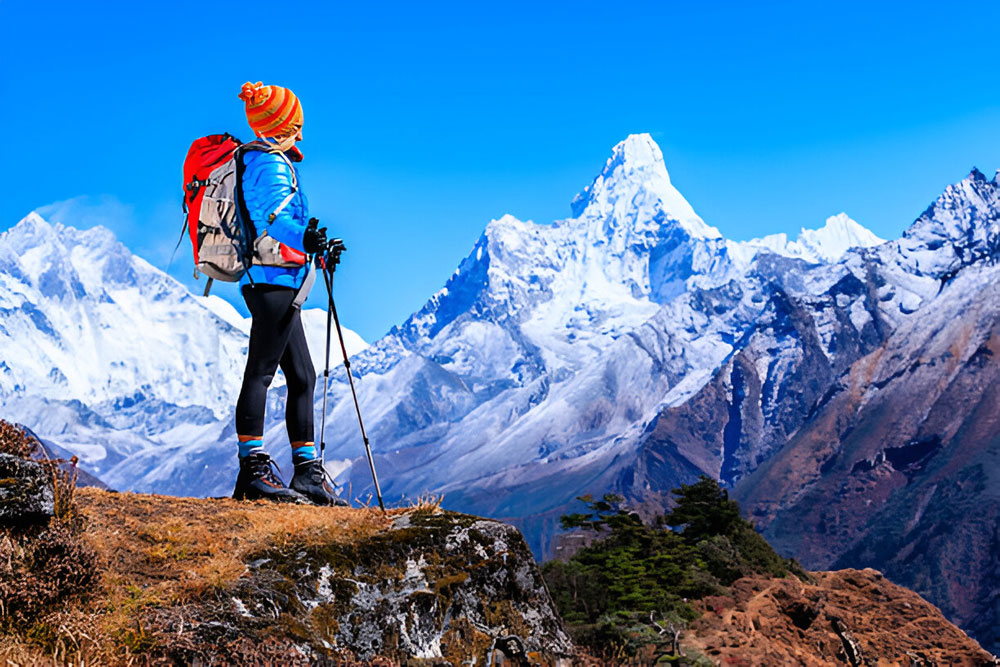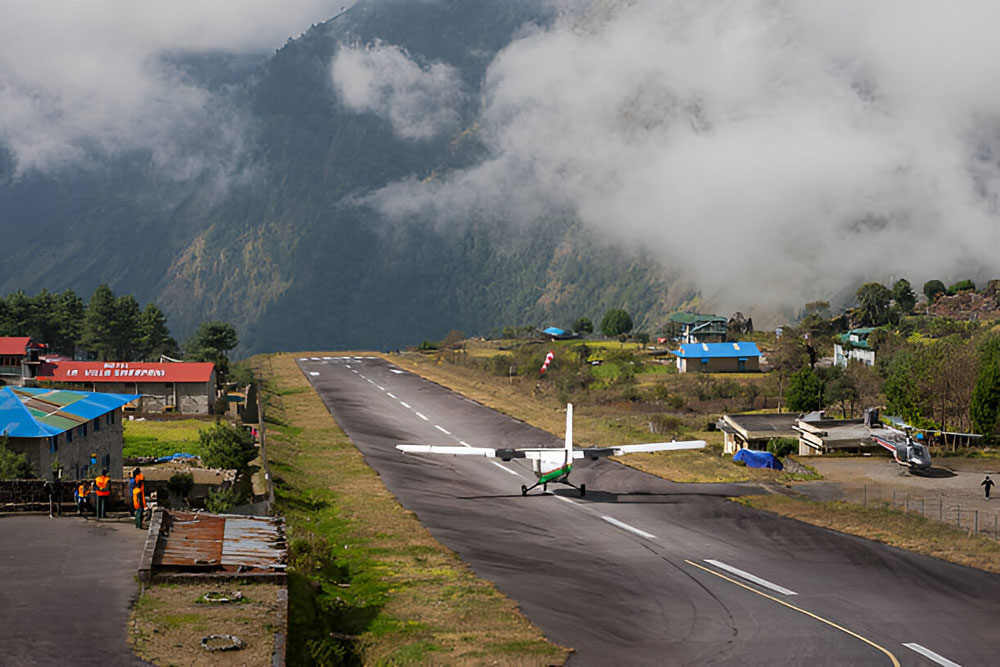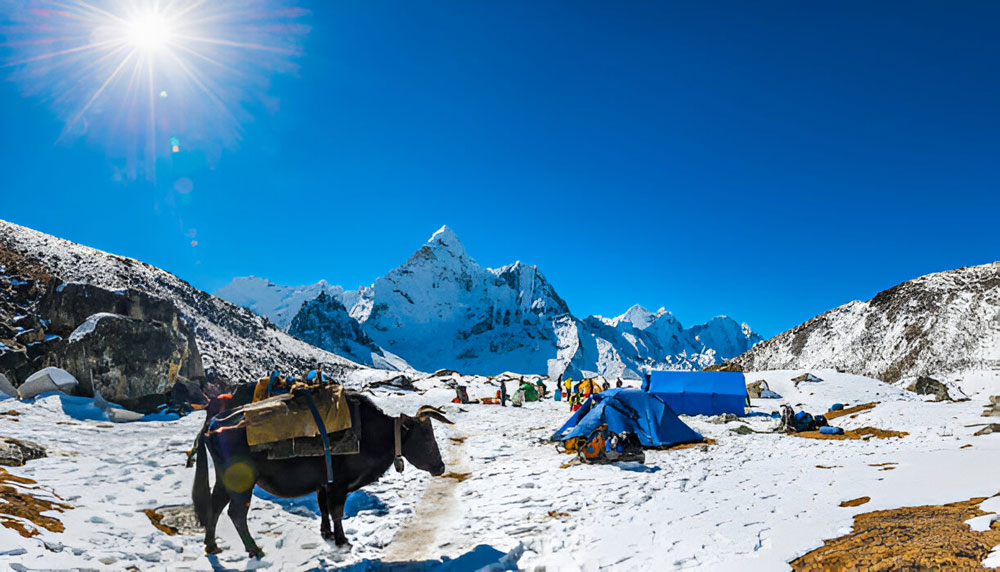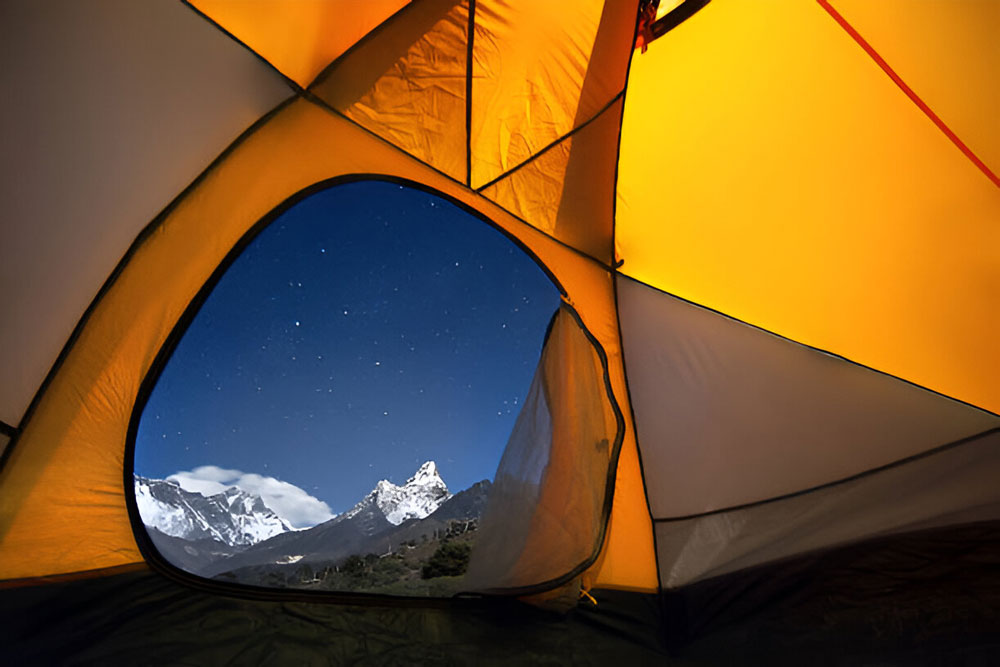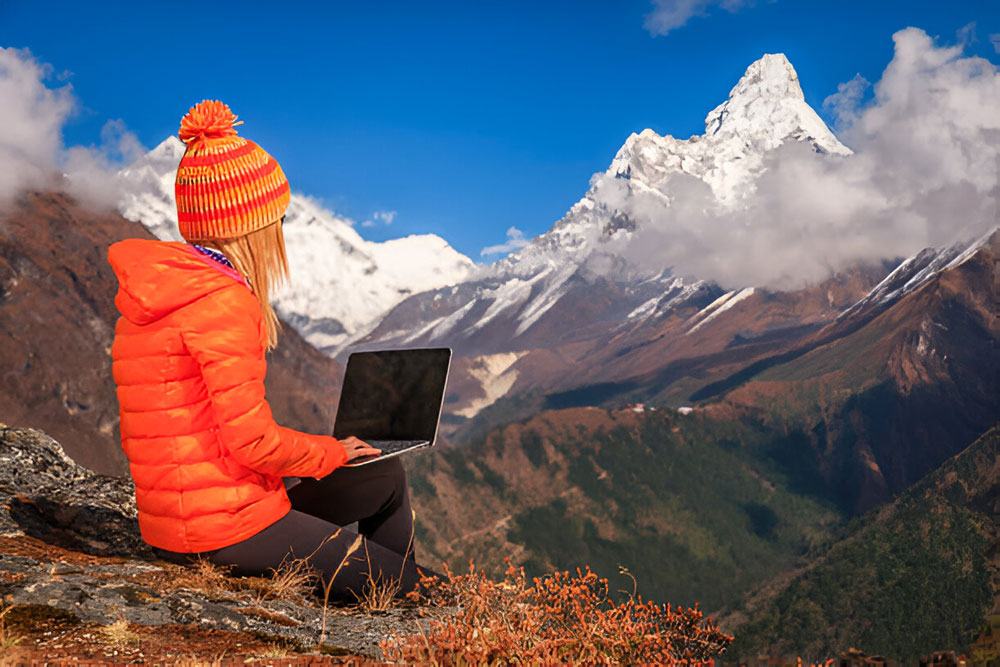With the characteristic pyramid shape, Mount Ama Dablam stands at 6812 Meters (22349ft) and is considered one of the most beautiful mountain crests in the whole world. Every trekker who visits the Khumbu Region gets hypnotized by the magnificence of this Mountain Peak. Located in the Khumbu region to the south of Everest and Lhotse, climbing the Ama Dablam will be one of the most beautiful feelings for the keen mountaineer.
Ama Dablam means “Mother’s necklace”- the long ridges on each side look like an arm of the mother protecting her child. And the hanging glacier resembles a “Dablam”, traditional jewelry containing pictures of god, worn by Sherpa women. During your Ama Dablam expedition journey, you will pass through some of the most fascinating Sherpa villages of the Khumbu Region. You can also explore the Buddhist monastery and experience the immense influence of Buddhism on the lifestyle of people there. Besides the Sherpa and Buddhist culture, this expedition journey offers you the ultimate adventure experience in The Himalayas as the route is loaded with Chortens, gompas, majestic forests, and unlimited mysteries to unfold.

Ama Dablam is the third most popular Himalayan peak for permitted expeditions. Ama Dablam was first climbed on 13 March 1961 by Mike Gill (NZ), Barry Bishop (USA), Mike Ward (UK), and Wally Romanes (NZ) via the Southwest Ridge. They were well-acclimatized to altitude, having wintered over at 5800 meters near the base of the peak as part of the Silver Hut Scientific Expedition of 1960-61, led by Sir Edmund Hillary.
For the Ama Dablam Expedition, Southwest ridge is considered to be the most appropriate trail to reach the pinnacle of the Ama Dablam. This route provides exhilarating rock with exposed ridge, snow, and ice, climbing to its summit via the Dablam glacier. Besides that, an expedition through the Southwest ridge ensures optimal acclimatization and preparation for the summit. The climb is typically done with three camps along the ridge with camp 3 just below and to the right of the hanging glacier, the Dablam, so that any ice that calves off the glacier typically goes away from the camp.
Despite all the pleasant parts, it is quite stressed that, the expedition journey requires a demanding climb as all the skill along with the endurance capacity of a mountaineer is examined. Climbing to the top of the world's most adored pinnacle requires a dedicated mountaineer who has built up solid skills in rock climbing and ice climbing along with experience in high altitude and general technical competency.
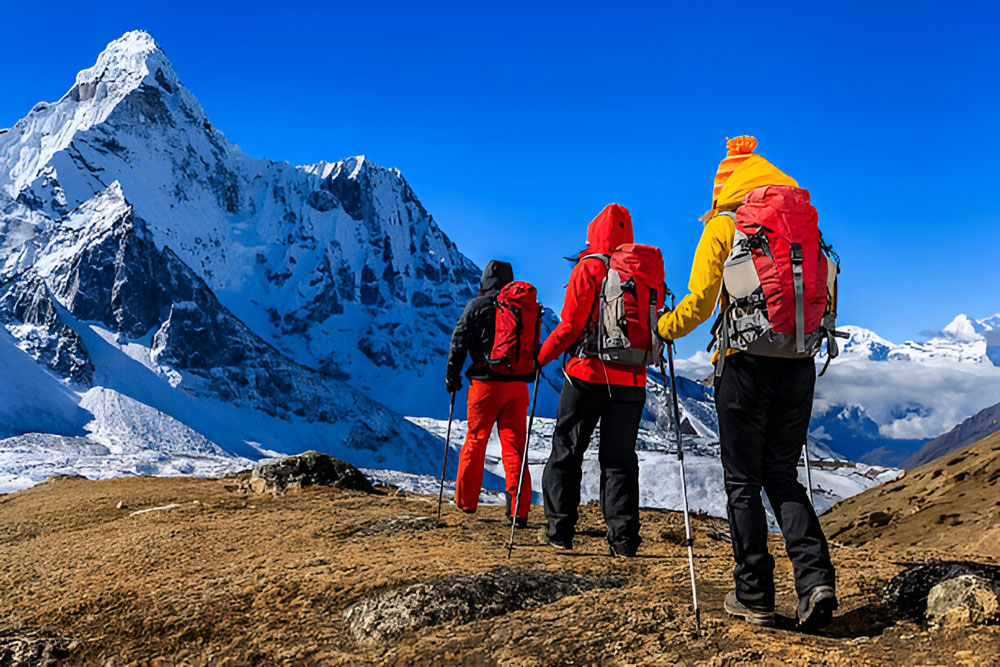
The Ama Dablam Expedition journey begins with a connecting flight to Lukla (2850 meters) from Kathmandu. After we arrive at Lukla, a gateway to the Everest Base Camp Trek; we then begin our journey towards the Ama Dablam Base Camp. As we slowly ascend, we walk through the Sherpa village, making our way through the alpine forest of pine and rhododendron, pass the small gompas and chortans, and consequently arrive at the base camp of the Ama Dablam. During our trek to the base camp, we take our time to properly acclimatize our bodies before the actual climbing period. We at Himalayan Scenery Trek and Expedition will make sure that your dream of conquering the pinnacle of Ama Dablam, is a reality with the highest priority on quality as well as your safety.
All of our guides and Sherpa have summited Ama Dablam and other Himalayan peaks countless times. This maximizes your safety and your opportunity to climb Ama Dablam successfully.
Climbing Routes
For the Ama Dablam Expedition, we will follow the standard climbing route via Southwest ridge with the typical arrangements of three high camps: Camp 1 (5600m), Camp 2 (5900m), and Camp 3 (6200m) with Base Camp at 4500m. All camps are arranged at the ridge of the mountains so that you can enjoy the heavenly views of the surrounding, which will also be the source of motivation to reach the pinnacle.
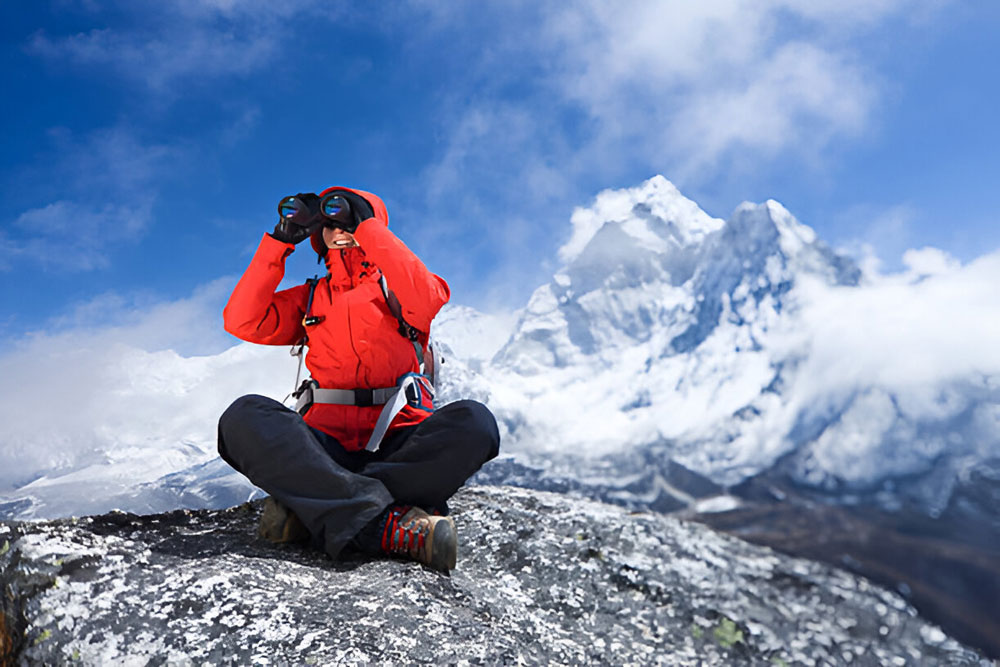
Ama Dablam Southwest Route Camps
Base Camp (4600 Meter/ 15092ft)
Ama Dablam Base Camp is one of the base camps which features huge grassland located on the high Himalayas of Nepal. You can enjoy playing volleyball and soccer at the base camp. Form the camp you can get the great views of Ama Dablam, Thamserku, Taboche and Kongde. Usually, the base camp is sunny due to its location. Here at the base camp the sun is out early and stays late into the day. During the spring and autumn seasons, there are a handful of trekkers i.e. approximately about 5 to 7 teams. You can get great views of Mountain peaks and the grassland is more beautiful during this season.
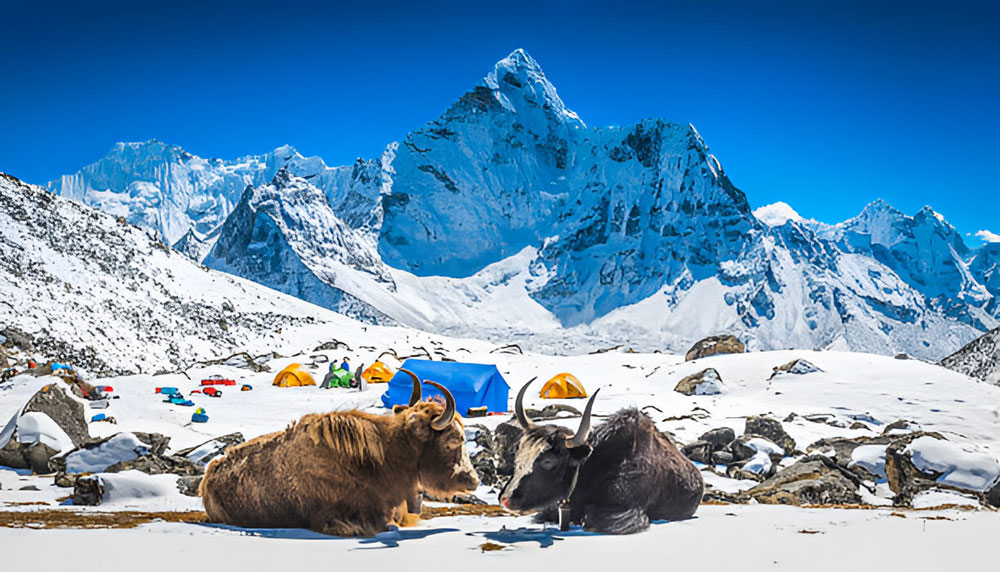
Camp One (5700 Meter / 18,800ft)
From Base Camp of Ama Dablam camp, 1 is 5 hours further but the trail is mostly easy. Along the trail, you will notice a short section of casual rock scrambled about 100m in length. To reach camp 1 you will need to climb some large boulders and climb an easy fourth-class slap. You will not be provided with any fixed rope in place. Camp 1 is not as flexible as base camp due to which you need to adjust with other climbers and share your tents. There’s roughly place for six to seven double tents while the same amount for single tents.
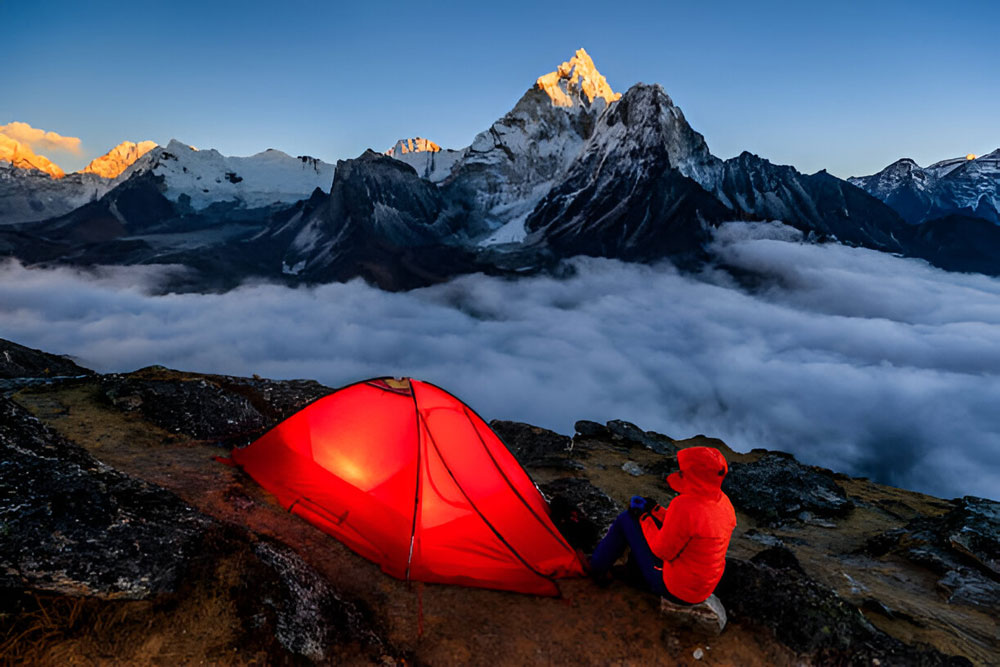
Camp Two (5950 Meter/ 19,521ft)
Camp two is elevated at 5950 meters and climbing from camp 1 to camp 2 is the hardest during this expedition. The climbing includes a fourth-class horizontal rock ridge around several pinnacles and gendarmes, huge exposures with massive drop-offs on both sides of the ridge. You will find great quality granite during your climbing sessions. At the end of your climbing sessions, you need to climb the yellow tower for 6 meters which is French 4th class, British Severe, North American YDS 5.5. Once you climb the yellow tower you will arrive at Camp 2.

Camp Three (6200 Meter / 20,341 ft)
The climb to camp three includes ice and snow terrains making it a bit challenging. There are various points where you will find fixed ropes for climbing purposes. The climb from camp 2 to camp 3 shifts over to mixed, ice, and snow terrain. You will have great views of Ama Dablam base camp, Kusum Kanguru and Kantega while climbing through rough terrains of ice and snow. It is now time to traverse the infamous Mushroom Ridge at 6150 meters/20,300 feet. Looking up at camp 3 (6300 meters/20,800 feet), with the Dablam above. Some strong climbers push for the summit from camp two. The route from the yellow tower to camp three is almost 55º of slop most of the way.
Summit (6812 Meter / 22349ft)
To summit Ama Dablam from camp three and return to camp two takes every climber about 10 hours. While summiting you will be dealing with some pitches of dramatic but very solid snow-ice(40º+) while climbing to the side of Dablam. Once you finish these pitches you will reach a fluted snow/ice field (30-50º) leading you to one of the world’s finest summits. From the summit, you can see Khumbu and the astonishing panoramic views of Lhotse, Nuptse, Mount Everest, Cho Oyu, Pumori, Shisapangma, and Makalu.
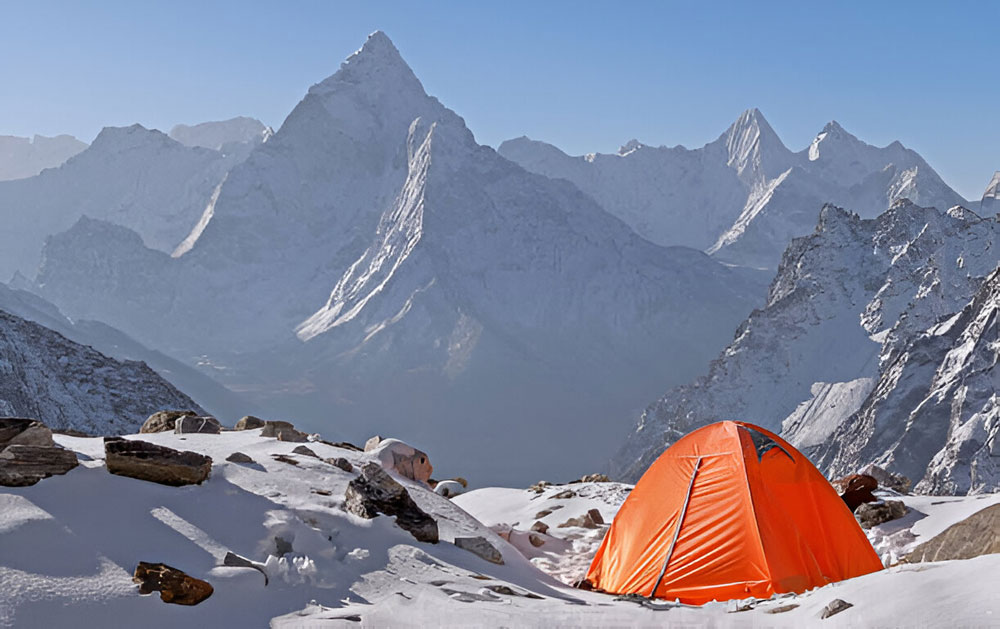
Experience Required
For the Ama Dablam Expedition, the climber ought to have good skills in ice and rock climbing and should be able to climb and rappel with the pack on. As the approach to climb the Ama Dablam, you will encounter a route that contains crux rock with countless harder pitches of up to 5.8 climbing, along with sustained pitches of steep ice and mixed terrain. A climber needs to climb 50 -70 degrees on straightforward ice. So, having decent skills in mountaineering is mandatory. As the expedition of Ama Dablam test all the mountaineering skills of the individual, the experience of mountaineering will be a plus point. Although we pursue the Southwest ridge route to climb up to the peak of the Ama Dablam, which is quite safer than other routes; however, there is a very low possibility of danger such as avalanche.
In Himalayan Scenery Treks and Expedition, safety is the topmost priority and we thrive to provide you with the safest mountaineering experience possible. With the highly experienced guides and Sherpa who have successfully conquered various Mountains, we assure you that you are in a safe hand and we give our best effort to make you climb fruitful without compromising safety. As per your safety concern, as we push toward the higher elevation, we will plan the ascend, monitor the daily weather forecast, check the ascent profiles as well as focus on other safety majors which may end up being deterrents in our successful expedition. Moreover, all the necessary medical kits, rescue equipment, and radio and satellite communication will be carried out by the team throughout the expedition period.
As you prepared for your expedition journey, don’t hesitate to contact our office. With the experienced guide and Sherpas, we provide all the necessary information regarding equipment, conditioning, the route, and the approaches of the Expedition. You can directly visit our office located in Thamel or call us at +977 – 9851083619 (Ram Krishna Timalsina). We are available on WhatsApp and Viber. You can also drop us an inquiry at [email protected]. We will get back to you in 2 to 3 working days.
